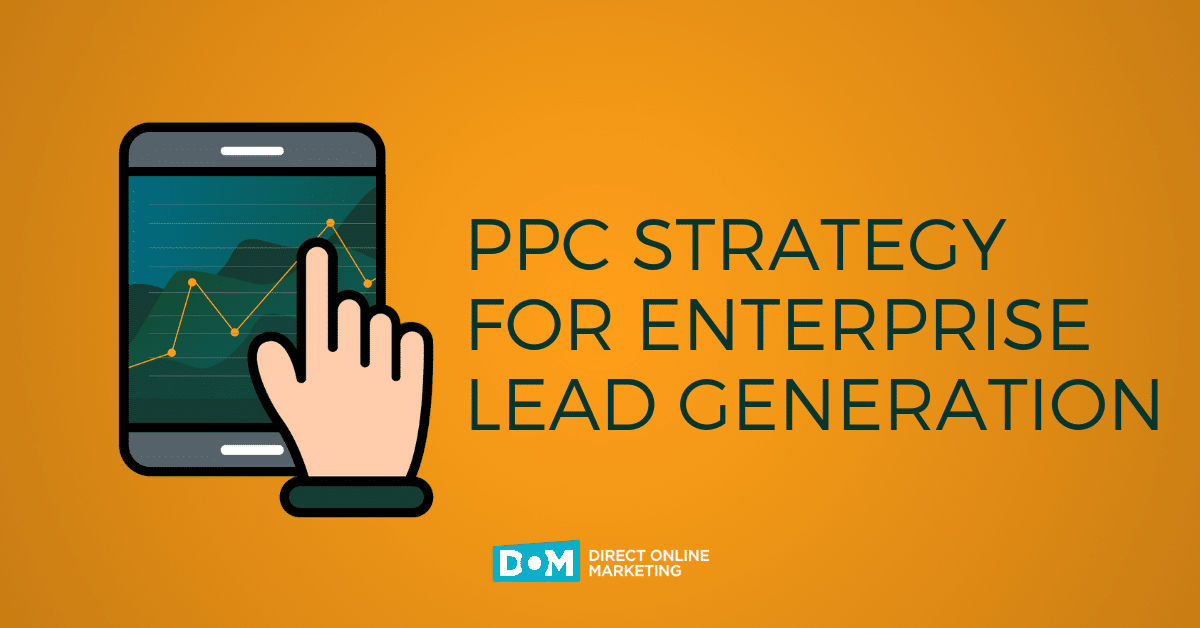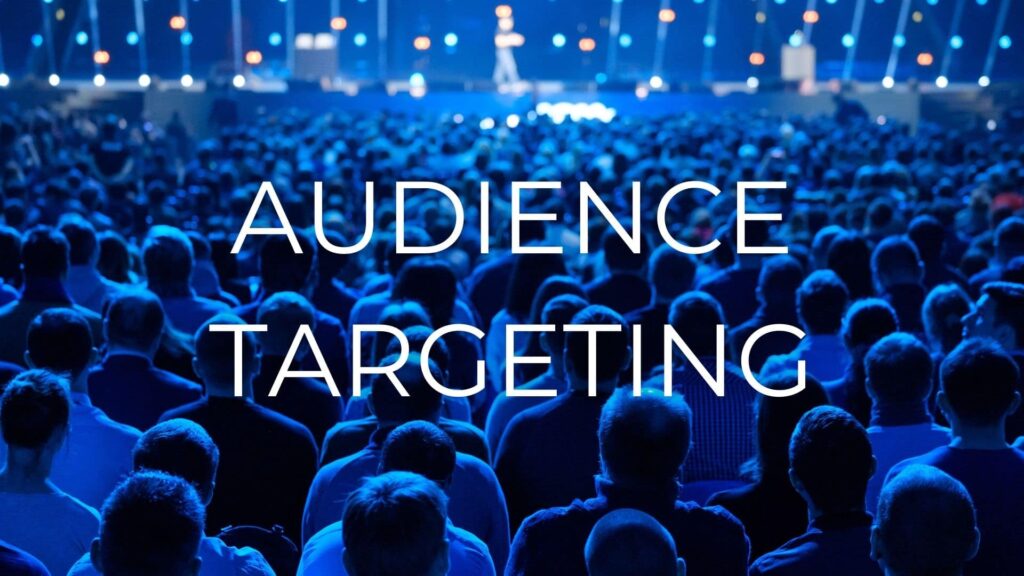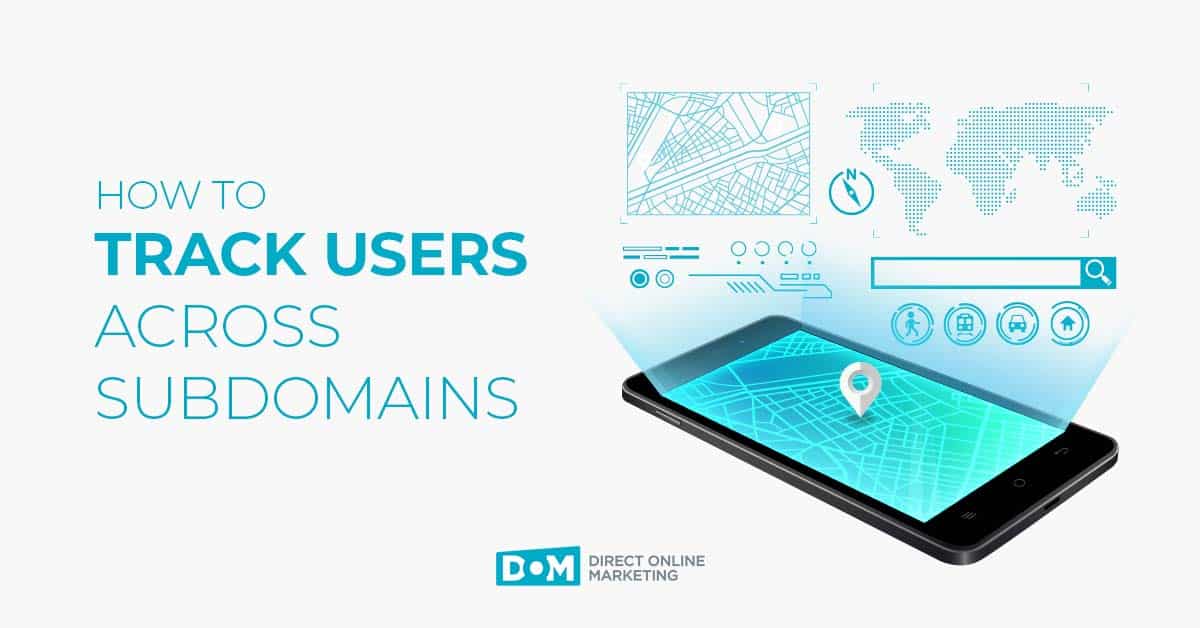How To Build a Digital Advertising Strategy for Enterprise-Level Lead Generation (Updated 2022)

Executives at global corporations understand that increasing your ROI relies on an enterprise digital marketing strategy that acquires leads and data.
But deploying such an enterprise-level strategy with the intention of improving lead generation strategy requires an arduous, concentrated effort that can feel herculean if you don’t understand the complexities.
When a CMO understands that enterprise-level lead generation relies on targeting, budgets, and paid media, they can organize those moving parts into a cohesive digital marketing strategy that wins new customers and clients.
Your consumers are online. Let’s go find them.
Below you find over 3,000+ words dedicated to enterprise digital marketing strategies and solutions. In the event you are a part of an enterprise organization, you probably aren’t starting a marketing campaign from scratch. Because of that, we created the following table of contents to help navigate where you need to go to grow your digital presence with confidence and improve your marketing efforts.
Digital Ad Strategy For Enterprise Lead Generation
- Part I: The Basic Considerations
- Part II: Goals
- Part III: Budget
- Part IV: Audience Targeting
- Part V: Types of Enterprise Digital Marketing Mediums
- Part VI: Perform Marketplace Analysis
- Part VII: Decide Your Brand Voice
- Part VIII: Set Up Reporting
- Part IX: Conclusion
The Basic Considerations
No matter what type of digital marketing strategy you choose, if you’re a global corporation, it will cost you. While successful earned media and viral sensations may appear to be free wins, they typically aren’t.
This is why paid media campaigns are the most popular forms of enterprise digital marketing. They’re the most reliable outlets that generate leads. When you streamline and optimize paid media campaigns, you can look to leverage viral and earned media opportunities.
It’s difficult to rely on viral campaigns and impossible to rely on them if you are doing so out of economic desires.
The Landscape Will Change
If you experience early success in paid advertising, it’s OK to pat yourself on the back. But it is not best practice to rest on your laurels enjoying the spoils of your newfound success.
The digital marketing landscape is always changing and evolving.
What was viral six months ago is dead today.
Landing pages that worked last October won’t convert leads this October.
The keyword budget from two years ago is two times the price today.
A flexible digital marketing plan creates a strategy that adapts and evolves. If you can’t evolve your strategy, your brand awareness and lead generation success will eventually lag behind the competition.
Embrace Multiple Digital Marketing Strategies
As stated prior, paid media serves to stabilize all digital marketing strategies. It’s the most reliable lead generation means. But it is not the only marketing play that grows brands.
It’s important to deploy a versatile digital marketing strategy that includes a variety of plans. Marketing by way of a one-dimensional strategy doesn’t lend itself to accelerated brand growth.
You need leads and data. You want qualified people requesting your products and services. You want to scale conversions.
Deploying the latest marketing tools or investing in a marketing platform like HubSpot or Semrush may be a great start for your organization, but that really only scratches the surface.
In order to create reliable, repeatable success, you’ll need to consider the following:
- Your goals
- Your budget
- Your audience targeting
- Your digital marketing mediums
- Your analysis of the marketplace
- Your brand voice
- Your reporting setup
Below, we go into greater detail on all of these topics.
Goals For Enterprise Digital Marketing
Whether you choose to work with an agency on your digital marketing strategies or do it yourself, you need to create a year plan. The year plan should include a variety of goals essential to driving revenue.
If you interview an online marketing agency that doesn’t suggest a long-term strategy that includes your goals, reconsider the relationship.
At an enterprise level, a long-term strategy keeps everyone’s feet to the fire. It represents internal and external accountability points.
You need to decide meaningful statistics to represent success and failure.
Here are some examples of digital marketing goals.
- Leads: How many daily, weekly, and monthly leads does your company receive?
- Lead Quality: Of those leads, how many result in sales?
- Landing Page Conversions: How many users hit your sales page, but back out? How many give you their information to request more information? How many buy directly on the page?
- Sales: How many sales do you make on a daily, weekly, and monthly frequency?
These are simply examples. Digital marketing goal measuring points can be endless in scope. It’s important to choose the goals that are most meaningful and impactful to your company.
For example, if more SEO traffic doesn’t improve sales, this means your goal of “more traffic” failed you. It means there is something missing inside the strategy funnel. But if you didn’t declare goals, you’d have a longer road to discovering the diagnosis.
Create Benchmarks
You can’t know where you’re going without knowing where you came from. If your digital marketing agency asks you for current numbers, that’s a good indication that they want to create benchmarks.
Benchmarks define a point in your digital marketing before your new strategy begins. Using the goals you defined in the section prior, they assert where your company was before the new strategy deployed.
This allows you to set reasonable, achievable goals. It sets the stage for accountability throughout all your marketing moving parts. It’s right there, in digestible statistical form. You know how many more leads you need tomorrow than you had today. You understand where sales should be next December. And so does everyone else on your team.
Set Realistic Goals
Some CMOs set ridiculously unachievable goals as a way to motivate a marketing team. Others do it because they don’t understand their marketing space enough to realize their goals are that of fantasy.
In either case, setting unrealistic goals disembodies marketing strategy from marketing labor. If no one can achieve your goals, what’s the point? That’s how your marketing team will feel. You’ll never determine authentic failures or successes because your goals misrepresent your space.
Are You A CMO? Do You Report To One?
Improve Understanding Of Campaign Performance
With Our SEO Cheat Sheet And PPC Score Card.
Leverage Intelligent Goal and Event Tracking
Now that you have goals, it’s important to identify when those goal metrics are met. Often, this means tracking form submissions or link clicks. We recommend you read this Google Analytics Form Tracking guide to begin.
Goals and Events Aren’t The Same
While close in dynamics, goals and events are two different metrics. Both help you analyze how users interact with your site, but they do so in unique ways. It’s important to understand those differences and nuances.
Google Analytics distinguishes between the two inside its interface. To locate goals, you need to access the Conversions section. To locate events, you need to access the Behavior section.
What’s the main aspiration of any good business?
To make money.
This means revenue must be accounted for in a statistical way.
Goals feed events and create a user narrative.
For example, if you make money through a lead generation form on your site, you need to track events (form conversions). But that’s not the entire story. This is where events come into play. You also might want to understand the time on a landing page or how far the user scrolled into the sales pitch before either leaving the page or converting into a lead event.
Let’s explore through examples:
An event tells you when a user converts as a lead or sale. In order to view conversions in GA, you must first install a conversion pixel on the page you’re tracking. One of the popular conversion pixel deployments is on a “thank you” page that pops up once a user has submitted a form.
On the flip side, you can request that GA track that same page as a goal for scroll depth.
Here are some popular Google Analytics goals:
- Time on site
- Pages per session
- Sharing on social media
- Playing a video
There are a variety of intelligent goal tracking methods at your disposal. In the end, you want to track the user’s journey and gain an understanding as to why events fail or succeed. Did someone fill out the form but not convert during the phone call? This could indicate poor lead quality or a flat sales call method.
Goal and event tracking empowers intuition and instincts with valid supporting data. When you track goals/events, you stop guessing. Guesswork bludgeons digital marketing strategies because it lacks statistics and evidence.
Goal tracking displays cleanly inside of your Google Analytics account. It’s a quick and easy to interpret synopsis of wins and losses. But it’s also a deep dive under the hood of your sales and leads health.
Declare Value To Goals
Google Analytics allows you to decide ROI for goals. In other words, you can put in impactful monetary estimates for goal completions so that your interface assumes cash value.
Goal Flow: Where’d They Go? What Happened?
Lead funnel diagnostics only matter if you can see them. When you set up goal tracking, Google Analytics allows you to explore a Goal Flow. The Goal Flow will display where in the lead funnel users exit.
Such information is critical to increasing ROI. The data can signal what changes need to be made, and where, in order to get more users to ultimately convert.
Is your marketing paying off? You can diagnose that on the fly with Goal Flow.
Event Flow: Same Thing
Using an Event Flow in Google Analytics, you determine the general flow of a user’s engagement with the site.
Remember, events can track non-essential engagement items. With Event Goals, you can decipher where engagement falls off. For example, does time on site increase or decrease inside the Event Flow?
Goal/Event Tracking Is Essential In PPC
No matter what ads platform you choose, you must track goals and events as a way to prevent chaos and unreasonable financial losses. When an ad campaign runs in Google Ads, money spends. You need to understand why you are or aren’t making back your spend. In order to get in the black, you need to track Google Analytics goals while in the red.
In short, if your marketing team or agency isn’t tracking goals and events, that’s unlikely a good thing for your enterprise-scale business.
Budget
One of the toughest questions in digital marketing is how much should you spend. It’s often a difficult, stressful question to tangle with.
But digital marketing budgets must be prioritized. Without them, it’s difficult to hire advertising talent or acquire the services of an agency.
You need to understand how much you can spend on advertising campaigns and be profitable. Without this basic knowledge, you might become a CMO throwing dollars out the window.
Proportional Budget Expectations
In the initial phase of establishing a marketing budget, it is best to stay broad. You need to decide what portion of the company’s overall budget will make up the digital marketing spend. For some companies, that could be as high as 50%. For others, it could be on the lower side of the spectrum, nearer to 10%.
Most people will throw out “10%” as the safe response to the question.
If we break down marketing budgets by industry courtesy of Deloitte, we can see that some verticals are heavier handed in advertising spend than others.
Marketing budget disparity aside, your company needs to make decisions for itself. If you’re a SaaS company, you might consider deeper marketing budget investment.
An Award-Winning Communications
SaaS Needed To Scale MQLs.
Here’s How SEO Turned Into Their Top Channel.
Compare Growth Percent To Marketing Budget Percent
Now that you have your marketing budget’s percent decided, you’ll need to establish growth percent expectations.
For example, in 2018, Google invested nearly 12% into its marketing budget. It tracked 23% YoY revenue growth. Microsoft, in the same year, invested 15% into its marketing budget but yielded a more humble 14% YoY growth.
Both Google and Microsoft posted impressive digital advertising ROI.
It’s important to establish budget goals in order to make annual financial decisions. One size will never fit all, so don’t just look at what the Jones’ are doing with their similar company.
In the end, you need to establish a budget that makes sense for your company. You also need to understand that in the realm of paid advertising, expect initial losses while you begin gaining improved insights through goal and event tracking.
Audience Targeting In Enterprise Digital Marketing
Who do you want to sell your products and services to? What’s your company’s buyer persona?
If you can’t establish a buyer persona, you’ll waste precious advertising dollars. A buyer persona is utilized during advertising campaign setups. Understanding who you market to means improved clarity into things like age, gender, and vocation.
We would suggest reading our simple guide to buyer persona guide.
Types Of Enterprise Digital Marketing Mediums
So you have a marketing budget. You understand who your targeting in terms of buyers. Goals and events are set up and functioning properly.
Now, where the heck do you begin?
Let’s look at three unique enterprise digital marketing mediums.
Paid Media
Paid media examples are Google Ads and Bing Ads, although there are numerous other platforms you can pay to generate leads for you. For example, LinkedIn and Facebook are two more popular paid media platforms for enterprise digital marketing.
Paid media is a simple concept. It means you use advertising spend to buy ads. There are a number of different types of ads to consider.
- Display: The use of banners, images, video/audio, that display on websites or apps.
- PPC: Pay per click advertising. Links that draw clicks.
- Branded: Establishes a direct connection with a consumer, but isn’t always directly linked to a sale.
With each of the above, the goal might be different. Paid media is media you pay for, it’s as simple as that.
Earned Media
Think of earned media in the same way you’d think of a publicity campaign. When a company does something that garners awareness, attention, accolades, or otherwise, it’s earned media.
These days, earned media could be anything from a sound bite on the local news to an Instagram post going viral. It all amounts to the same style of marketing.
The key to earned media is that it can’t be paid for. If you pay for an article on a news website, that’s not earned media, it’s paid media.
In order to leverage earned media, you’ll need a marketing team with experience in content marketing and/or PR. Earned media requires some daily attention, from monitoring journalist story requests and to seeing what’s trending online.
Earned media doesn’t come easy. You’ll need to do the work.
Example Cases
Back in 2014, Coke launched a “Share a Coke” campaign that branded people’s names on their cans.
Another example of earned media is roundups. News roundups feature a vertical’s best and brightest write-ups or videos. The site that gets listed earns the exposure because it presented valuable web content. But the roundup article also gets some reverse exposure because often, those linked sites promote their place in the roundup.
Owned Media
Owned media is the online property you own. Typically, the most powerful owned media comes in the form of a website property, but it can also be extended to an app or a Facebook/Instagram page. In most cases, the Facebook page feeds traffic to the website, establishing an owned media flow.
The strategies we typically find most effective for generating traffic and leads to owned media include SEO and CRO.
Owned media is hardly complicated and any enterprise business will have it.
Your Enterprise Digital Marketing Strategy Will Need Them All
If you want your business to achieve at the next level, you’ll need all your digital marketing mediums to be on point. You need to optimize and evaluate each portion of the hierarchy to make sure no stones are left unturned (or unoptimized).
All of these elements act in unison of one another, but they are all independent influencers of success and failure. Many companies make the mistake of lumping them all into one marketing bucket.
Each media type needs its own optimization and special attention.
Enterprise Digital Marketing Strategy Action Items
We’ve gone over a lot of information in this guide. At every turn, there is one common theme we can’t ignore.
Enterprise digital marketing strategy relies on a data-driven mindset.
Perform Marketplace Analysis
To begin, perform your marketplace due diligence. You might consider having an outside firm assist in this area, depending on your time constraints and budget. You need to establish a strong, viable overview of your entire market.
Who is your competition?
If you choose to hire an advertising agency, they’ll use this information to craft an appropriate strategy. Even if you consider leveraging the ad agency for this work, you should still have a solid idea of who you’re up against in the marketplace.
What products and services does your target audience already use?
This goes back to the buyer persona, but it can’t be said enough. You need to understand what your target audience is already purchasing. This helps your marketing strategy expose pain points. Pain points, once resolved, are the key to moving product.
Understand Potential Legal Quandaries
Could a simple policy change tank your successful business? We find this type of issue to exist heavily in financial and real estate marketplaces. It’s never a bad idea to have a lawyer assess your marketplace risks prior to establishing a marketing strategy. This helps you understand what obstacles might arise in the future. In those cases, you’ll already have a plan and can avoid being reactionary.
Leverage Surveys
Surveys, whether performed by your company or by a third party, can help define buyer personas and marketing strategy.
Use Focus Groups
Focus groups give instantaneous feedback over products and services. Having interested people use your product helps you fix weak points before going to market. It’s better to understand your product’s downsides before thousands of reviews hit the market.
Define Your Brand Voice
Whether it’s a new marketing director or agency, you are sure to be asked what your brand’s voice is for advertising purposes.
Often, this feels like a heavy question for a CMO. But in the end, the advertising agency simply wants to know how you want your brand represented in website copy and ad copy.
For example, is humor an OK approach for your brand?
Do you choose to avoid controversial topics such as politics?
Do you want to deploy aggressive ad copy that potentially takes jabs at the competition?
Do you want formal or informal copy?
If you are unsure, write a few ads yourself as a test. See what type of language you come up with. This can help you gauge your comfort level with your brand’s voice.
Set Up Reporting for Enterprise Digital Marketing
We went over the importance of reporting. But what good are Google Analytics events and goals if you don’t ever analyze them?
Whether you’re using an agency or an internal marketing team, make sure you get monthly reports delivered. Decide what metrics are the most meaningful to digest. You don’t want a monthly report that overwhelms. If you note a problem, you can take a deeper dive.
Your monthly report should be highly digestible and convey the status of lead quality immediately.
Conclusion On Enterprise Digital Marketing
Establishing an enterprise digital marketing plan means lots of hard work and dedication throughout your organization. You’ll need to leverage impactful data and stats to help foster a data-driven environment. Utilizing weekly or monthly reporting that’s easily digestible can help keep your finger on the pulse of success and failure. You’ll want to know when to change course and when to stay the path.
To get more information on this topic, contact us today for a free consultation or learn more about our status as a Google Partner Agency before you reach out.











